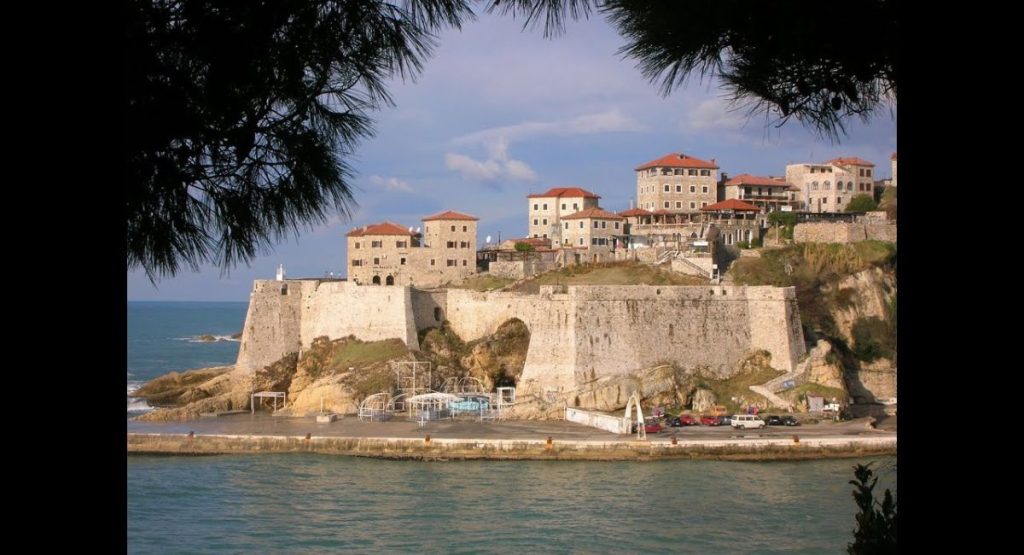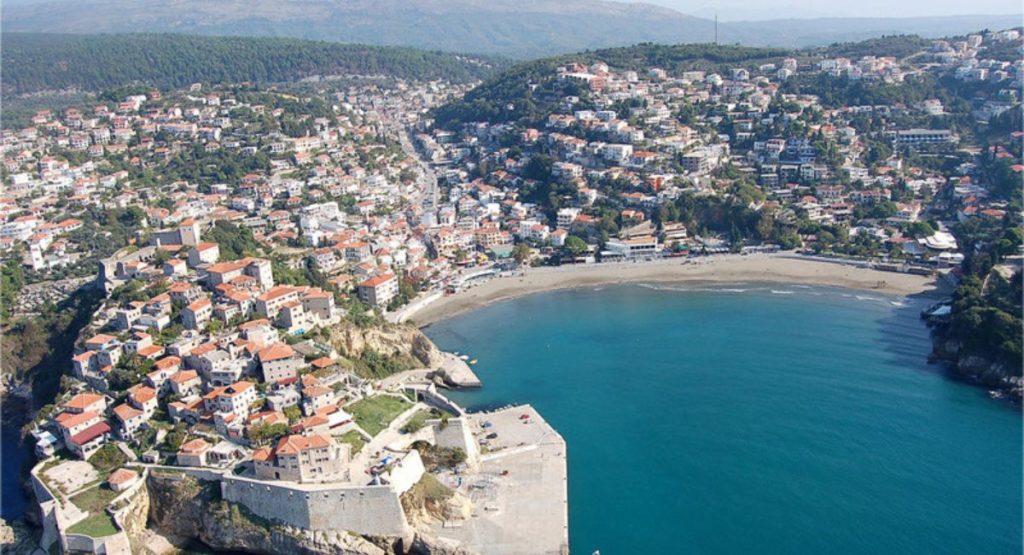What Exactly Is Ulcinj?
Ulcinj is one of Montenegro’s oldest towns, over 2,000 years in the making. It has been ruled by the Illyrians, Romans, Byzantines, Venetians, and Ottomans—all leaving their mark. Today, Ulcinj is known for:
- Velika Plaža (Long Beach): a 12-kilometer stretch of soft sand, one of the longest beaches on the Adriatic.
- The Old Town: a citadel rising above the sea, with stone alleys, fortress walls, and Ottoman-era architecture.
- Cultural blend: Ulcinj has a strong Albanian influence, reflected in its food, language, and traditions.
- Natural treasures: olive groves, salt flats filled with migratory birds, and secluded coves.
Why Visit Ulcinj? The Benefits
- Affordable charm: Hotels, food, and activities here cost significantly less than in Dubrovnik or the Italian coast.
- Variety in one place: In a single day you can relax on the beach, explore medieval towers, hike olive groves, and enjoy fresh seafood.
- Nature lovers’ haven: Birdwatching, pine forests, and healing sulfur springs make it a wellness retreat as much as a beach destination.
- Cultural depth: Unlike purely resort towns, Ulcinj has a living history and layered identity that travelers can really feel.
Misconceptions & Challenges
- Getting around: Public transport is limited. Renting a car or using taxis makes things easier.
- Infrastructure: Some roads and facilities feel rustic compared to Western Europe—part of the charm, but plan accordingly.
- Seasonal crowds: July and August can get busy. If you prefer peace, visit in May–June or September.
- Language barrier: While younger locals speak English, older generations may not. A phrasebook or translation app is useful.
How to Plan Your Trip to Ulcinj
Best Time to Visit
- May to June: Warm weather, fewer tourists, wildflowers, and early bird migrations.
- July to August: Peak summer energy, nightlife, and beach parties.
- September: Perfect balance of warm sea, calmer beaches, and autumn bird migrations.
How to Get There
- By air: The closest airports are Podgorica (about 1.5 hours away) and Tivat (closer to 2.5 hours).
- By road: Many travelers also drive in from Dubrovnik, Croatia, which offers scenic coastal routes.
Where to Stay
- Old Town: Stay in guesthouses tucked into fortress walls for atmosphere.
- Near the beaches: Hotels and villas line Velika Plaža and Mala Plaža. Perfect for beach lovers.
- Valdanos area: Rustic olive groves and secluded stays for peace and quiet.
What to Pack
- Swimwear, sunscreen, and a hat for long beach days.
- Comfortable walking shoes for Old Town’s stone alleys.
- A light jacket in shoulder seasons.
- Water shoes or a mat for rocky beaches.
Top Things to Do in Ulcinj
Explore the Old Town
- Walk its labyrinth of stone alleys.
- Visit Balšić Tower for sea views.
- See the Sailors’ Mosque, one of the oldest in Montenegro.
- Check out the Archaeological Museum for layers of Illyrian, Roman, and Ottoman history.
Hit the Beaches
- Velika Plaža: 12 kilometers of golden sand, great for swimming, sunbathing, and kitesurfing.
- Mala Plaža (Small Beach): Right by the Old Town, lively and convenient.
- Ladies’ Beach: Famous for sulfur springs and mud with healing properties, traditionally for women only.
- Valdanos Bay: Pebble beach surrounded by olive trees, more secluded.
Connect With Nature
- Ulcinj Salt Flats (Salina): Birdwatching paradise—home to flamingos, herons, and other migratory birds.
- Olive Groves of Valdanos: Said to have over 80,000 olive trees, some hundreds of years old.
- Pine Woods: Locals walk here for the therapeutic air.
Outdoor Adventures
- Kitesurfing and windsurfing at Velika Plaža—lessons and rentals are widely available.
- Horseback riding along the sand dunes at sunset.
- Kayaking and snorkeling in hidden bays and caves.
Food and Drink
- Seafood specialties: grilled octopus, fish stew, and mussels in wine sauce.
- Balkan favorites: ćevapi, burek, cicvara.
- Sweet treats: trileçe cake or baklava.
- Drinks: try Montenegrin wines or local rakija.
Nightlife
Ulcinj has a mix of beach clubs, cocktail lounges, and shisha cafés. Nights are more relaxed than in Budva, but you can still find lively beach parties in peak season.
Mistakes to Avoid

- Don’t only stick to the main beaches—venture to Valdanos or small hidden coves.
- Avoid arriving without a plan for transport; car rentals or transfers make things smoother.
- Don’t underestimate the midday sun; plan city walks in the morning or evening.
- Don’t book only one night—you’ll need at least 3–4 days to soak in the variety.
Ulcinj Compared to Other Montenegrin Towns
- Budva: Known for nightlife and beaches, but more commercial.
- Kotor: Stunning medieval town in a fjord-like bay, but lacks sandy beaches.
- Ulcinj: Best for sandy shorelines, cultural depth, and affordability.
FAQs
Is Ulcinj good for families?
Yes. Long Beach has shallow waters perfect for kids, and there are family-friendly restaurants and activities.
Can men visit Ladies’ Beach?
Traditionally, it’s women-only. Men should respect that custom and explore other beaches nearby.
How many days do I need?
At least three days. A week is ideal if you want to combine beaches, history, and day trips.
Is Ulcinj safe?
Yes, it’s considered safe for travelers. As with any destination, take standard precautions with valuables.
What makes Ulcinj unique compared to Budva or Dubrovnik?
Its mix of sandy beaches, Ottoman history, affordability, and laid-back atmosphere. It feels less polished, but more authentic.
What’s the best way to explore the Old Town?
On foot. Go early in the morning or around sunset to avoid heat and enjoy the best light.
Closing Thoughts
Ulcinj is not a “tick-the-box” destination—it’s a slow discovery. It’s where you wake up in an ancient guesthouse, swim in warm Adriatic waters, watch flamingos at dusk, and taste seafood so fresh it barely needed a grill.
If you’re planning your Montenegro trip, carve out space for Ulcinj. It’s more than just a beach town—it’s a storybook of history, nature, and authenticity waiting to be read at your pace.

